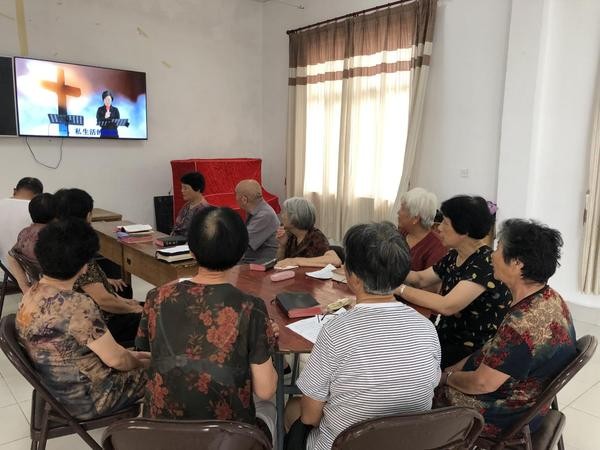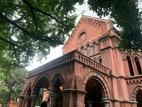City W was one of the earliest cities in China to adopt the small-group pastoral care model. Recently, however, a local pastor who has been managing churches for several decades expressed that, although the small-group model had its benefits, it was a "misfit" in grassroots churches for a number of reasons. Hence, when carrying out the small-group model, grassroots churches should be cautious and not blindly follow suit.
Elder C is the director of a grassroots church in City W. The church has a congregation of more than 1,000 people, which is made up of a wide range of ages and occupations. Urbanization of the city has also caused greater physical distance, as church members are living farther apart from each other. For a grassroots church with a large congregation, the establishment of small groups allows more efficient pastoral care, management, and visitation. It also enhances the congregation's sense of belonging to the church. Yet, according to Elder C, in order for the small-group model to really take root in grassroots churches, the following issues would first need to be addressed.
Firstly, the positioning of small-group model is misaligned with the needs of grassroots churches.
Brother Z, the head of the church's literature ministry and youth ministry, pointed out that the emphasis on vision and mission of local grassroots churches was different from that of small-group churches. The small-group model that the churches in the city adopted is mostly from places like Hong Kong, Taiwan, and Singapore. In these locations, the main vision of urban churches under the small-group model is the expansion of the congregation, and these churches strive to develop their small-group ministry into small-group churches. However, Brother Z stated that membership expansion was still not the emphasis of the grassroots churches. For many more local churches, small groups only needed to serve as a connecting channel and church management aid.
Elder C believed that some churches that have implemented the small-group model, as well as some members of these churches, had misunderstood the purpose of small groups and the positioning of the church. When the city’s churches started to adopt the small-group model, some believers thought that they could just attend either small groups or the church service; some even regarded small groups as more important than the church service. They felt that as the teaching in the sermon of the church service only went one way and the sharing was interactive in small groups, the latter was more in line with the needs of development in modern-day believers. But Elder C stressed that, with regards to the faith and the church, Sunday worship alone should be the key focus and that all ministries were merely aids. If one had been confused on this issue, they might get their priorities wrong.
"The church has no single solution, but only one single God." Elder C continued to share that some local churches were convinced that small groups were the only solution for the church. On the one hand, they ignored the fact that the increase in membership was, in some sense, exaggerated. There was an increase in the number of believers, but not in the overall quality of them. And on the other hand, they attributed the success of church expansion only to the small-group model and not to God.
Secondly, high-quality group leaders are to be selected and trained in grassroots churches adopting the small-group model.
Elder C pointed out that the group leaders played a very important role in the small-group model. Overseas churches were able to implement the small-group model as they could find suitable group leaders among believers more easily. Having inherited a background of faith, the overall quality of the believers was high. However, the overall quality of believers in the city’s churches was inadequate. Most believers were still at the level of folk religion. The quality and effectiveness of implementing the small-group model were therefore limited.
Also, Elder C pointed out that in grassroots churches, the systems in management and leadership might easily become imbalanced as excessive reliance might be placed on the power of individual leaders. As the congregation continued to grow in size, churches should be able to establish systems for the control of authority, especially that of the leaders. Small groups were aimed at downplaying the power of leaders. However, as the small groups grew in popularity, some of the leaders may have become self-satisfied and stopped following the church's instructions.
Furthermore, when adopting the small-group model, some churches only followed the model mechanically. They used the number of small groups as an indicator and formed more small groups in order to create more groups. These churches would only mechanically assign an equal number of congregation members to a fixed number of small groups. To manage the groups, a certain number of group leaders must then be selected, and when there are no high-quality believers, some incompetent believers might be assigned to be group leaders. This would easily cause self-inflation, impairing the group leaders' function as a communication channel between the church and believers. Moreover, small-group-based biblical teaching, management, and visitation activities would also be affected.
In this regard, he urged that grassroots churches needed to be aware of the issue of congregation quality. When creating and arranging small groups, the churches should not be number-oriented but rather aim for the suitability of group leaders. They should first seek out members who are fit to be group leaders. Then, different numbers of members could be assigned to the small groups according to the gifts of the group leaders. There might be five members or as many as 20 members in a group.
Thirdly, it is difficult to form small groups based on members’ needs and share sermon messages in grassroots churches.
Brother Z of the church commented that the key to gaining the advantage of small groups lay in the sharing session of each meeting. This not only required the leadership of high-quality group leaders but also suitability in group division.
He believed that, at present, local churches were not able to arrange the groups in a more detailed classification. Usually, groups were arranged only according to age and place of residence. Members within a group might be very different in their life stages and the lives they led. But it would be difficult if one were to further arrange the groups vertically, such as by occupation or roles, like the role of "mothers," because of the shortage of church management staff and the variance in the occupations of the congregation members.
Brother Z also said that, in order to reinforce the sermon’s message, group leaders needed to put forward questions based on the sermon’s message of the week during the meetings and lead members in the sharing and discussion.
Just as Elder C said, small groups are no doubt a solution for churches today. However, most of the grassroots churches are still in the "natural group" stage. Therefore, for churches to fully realize the advantage of small groups, such as that in biblical teaching reinforcement and fellowship, much remains to be done by the churches in the management and pastoral care of small groups.
- Translated by Joyce Leung











